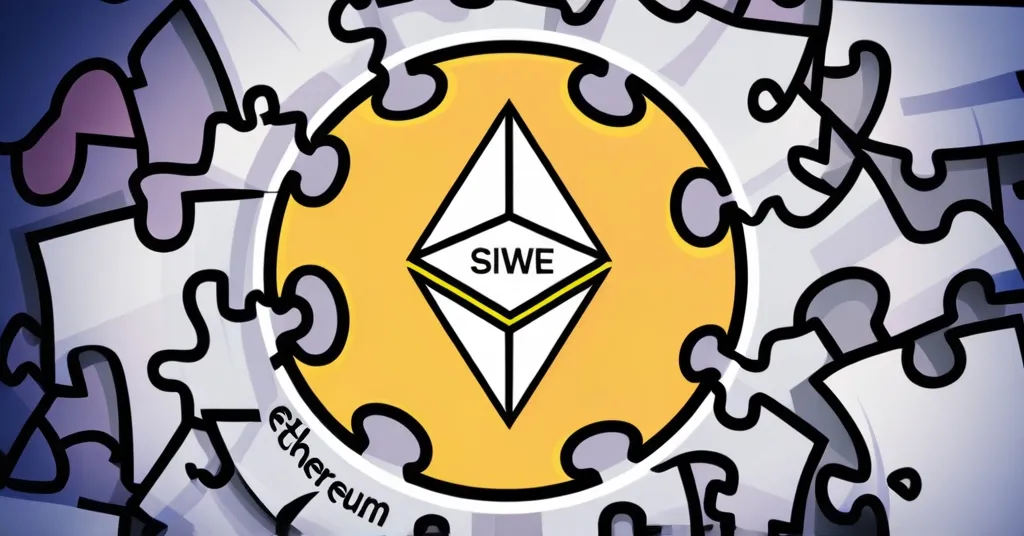Ethereum’s Signing Chaos: SIWE Standardization Key to Security and UX

Fixing Ethereum’s Message Signing Chaos
Ethereum’s various message signing methods have created a patchwork of confusion and security risks, challenging developers and users alike. The introduction of the SIWE standard aims to unify these processes, yet its adoption remains uneven, impacting the overall security and user experience.
- Ethereum’s fragmented signing methods
- SIWE standard’s role and adoption
- Security risks and user experience
Ethereum’s world of message signing can feel like trying to solve a puzzle in the dark. With at least six different ways to sign a message, the platform’s fragmentation complicates life for developers, who must juggle these varying standards to ensure their applications work seamlessly across different wallets and platforms. Message signing, the process used to verify the authenticity of messages sent within the Ethereum network, becomes a minefield of potential errors and inconsistencies.
Enter the Sign-In with Ethereum (SIWE) standard, a beacon of hope for standardization. SIWE aims to provide a unified way for users to sign into decentralized applications (dApps) and interact with self-executing contracts, known as smart contracts, where the terms are directly written into code. However, despite its potential, not all platforms have jumped on board. Fuel, a smart contract platform, sticks to older signing methods, perhaps due to cryptographic considerations or simply a lack of awareness about the updated standard.
Wallets like MetaMask have embraced SIWE for transactions initiated by websites or dApps, aiming to streamline user experience and bolster security. Yet, the lack of universal adoption across the board leaves Ethereum vulnerable. Different signing methods might have varying levels of security, creating a larger attack surface that hackers can exploit. As Ethereum currently supports multiple methods for signing messages, the potential for errors and security breaches increases.
The user experience isn’t faring any better. Imagine trying to sign into your favorite app, only to be met with different interfaces and processes every time. It’s a recipe for confusion and potential errors, undermining trust in Ethereum as a whole. The need for standardization isn’t just about making life easier for developers and users; it’s about ensuring the integrity and safety of the entire network.
So, what’s the path forward? Developers need better education on signing standards. Understanding the most secure and efficient methods can help them adopt best practices and reduce the risk of security breaches. Coordinated efforts between wallet providers, dApp developers, and the Ethereum community are crucial to standardize signing methods and enhance security across the ecosystem.
The journey towards a more secure and unified Ethereum ecosystem isn’t just a technical challenge; it’s a community effort. As Ethereum continues to evolve, the need for standardization becomes increasingly clear. With a market value of approximately $167.46 billion as of October 2023, and platforms like Arbitrum capturing a significant market share (55.95% as of August 2023), the stakes are high. Standardizing signing methods is vital for facilitating smooth migration and operation of smart contracts across different blockchain environments.
Let’s get real: if Ethereum doesn’t standardize soon, it might as well be handing out free passes to hackers. The future of Ethereum depends on its ability to adapt and improve, ensuring it remains a secure and reliable platform for the next generation of decentralized applications.
Counterpoints and Challenges
Of course, the road to standardization isn’t without its hurdles. Some platforms might resist adopting SIWE due to technical or strategic reasons. For instance, older systems might find it challenging to integrate new standards, while others might be wary of the potential impact on their existing user base. Ethereum must navigate these challenges carefully, balancing innovation with practicality.
A case study worth mentioning is the successful implementation of the SIWE standard by a platform that saw immediate benefits in security and user experience. By adopting SIWE, they reduced the fragmentation in their signing methods, leading to fewer errors and a more seamless user experience. This example underscores the potential of standardization to transform the Ethereum ecosystem for the better.
Key Takeaways and Questions
- What is the main issue with message signing on Ethereum?
The main issue is the fragmentation of signing methods, leading to inconsistencies and potential security vulnerabilities.
- What is the SIWE standard, and why is it important?
SIWE (Sign-In with Ethereum) is a standard aimed at standardizing message signing processes across Ethereum. It’s important because it aims to reduce fragmentation and enhance security and interoperability.
- Why do some platforms like Fuel use older signing methods?
Fuel might use older signing methods due to cryptographic considerations or a lack of awareness about updated standards.
- How does the lack of a unified signing method affect security?
It increases the attack surface as different signing methods may have varying levels of security, making it easier for attackers to exploit vulnerabilities.
- What can be done to improve the situation with message signing on Ethereum?
Better education for developers and coordinated efforts between wallet providers, dApp developers, and the Ethereum community are needed to standardize signing methods and enhance security.



